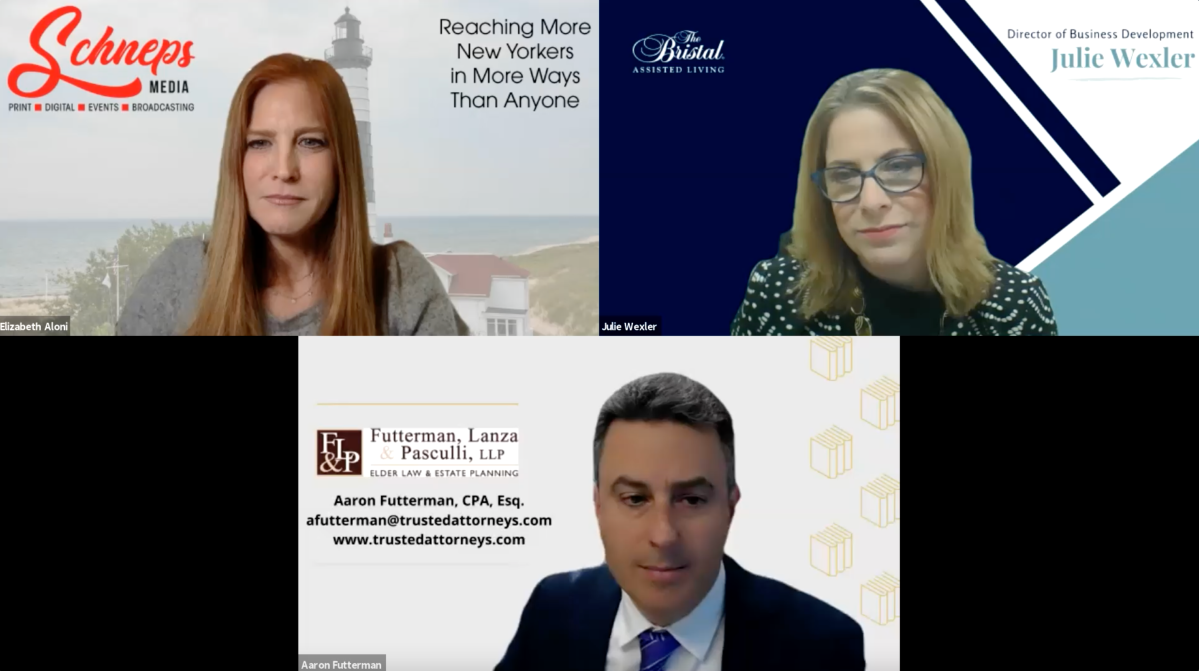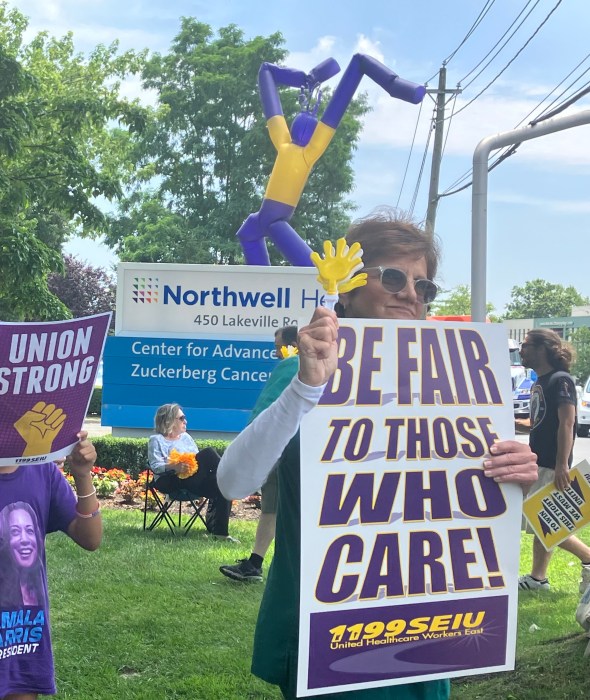Dealing with the various options for senior care can be stressful for those with a loved one in need of assistance—especially during the COVID-19 crisis.
Whether it be home care or senior living options, it’s important to be aware of the legal and financial considerations when it comes to all forms of senior care.
Experts in senior care spoke in a Schneps Media webinar, “Finding the Right Senior Care for Your Loved One” on Jan. 20. The panelists were Julie Wexler, director of business development at The Bristal Assisted Living, and Aaron Futterman, law partner at Futterman, Lanza and Pasculli LLP.
“Nobody plans to go to a nursing home,” Wexler said, “but the fact of the matter is sometimes that is the right level of care you need to stay safe.”
Wexler, who is aware that seniors can be deterred from the idea of a nursing home, emphasized the abundance of options for home care and senior living facilities, as well as how these options cater the needs of those with medical assistance.
With popular home care options such as companion care and home health aides, seniors have the option to receive proper care and medical assistance from the comfort of their own home. Other in-home care considerations include home modifications, home delivered meals and money managers.
Senior living options such as assisted living, memory care and independent senior living are just as beneficial as home care. Wexler pointed out that options such as independent senior living can be very beneficial to seniors by giving them a communal environment. When it comes to COVID-19 safety, Wexler assured that nursing homes follow strict Department of Health regulations.
Although choosing a senior care option amidst a pandemic can be stressful enough, another roadblock can often be finances.
“We know that the 65 and over demographic is the fastest growing age demographic,” Wexler said, “not only in the United States, but in New York State as well as the region.”
According to Wexler, Nassau County experienced a 52 percent increase in its 85-plus population over the last ten years, while Suffolk County experienced a 56 percent increase. The growing population of this age group can cause a strain on what Wexler referred to as “the safety net”, being Social Security, Medicare and Medicaid.
“On Long Island, the average monthly cost of nursing homes is anywhere between $15,000 and $17,000. That’s per month,” said Futterman.
The costs of nursing homes can cause a panic at first glance, but Futterman discussed legal and financial tips for those who plan to use Medicaid.
Futterman went over the qualifications to receive Medicaid to pay for nursing homes, explaining that the patient must have assets of less than $15,900 as well as pass a five year look back transfer penalty rule—pointing out that there is an exception of transfers between spouses.
When it comes to Community Medicaid, the qualifications are similar, except there is a zero month look back period. Due to this, Futterman suggested the use of a pooled trust, which he described as a “legal mechanism to preserve someone’s monthly income who is on Community Medicaid.”
Lastly, Futterman made note of the mistaken belief that Medicaid only pays for unfavorable senior living options. “It’s absolutely not true,” said Futterman, “it pays for all of them.”
Wexler and Futterman’s input in the webinar emphasizes the importance of doing research and planning ahead for senior care options, especially when it comes to legal and financial considerations.



































